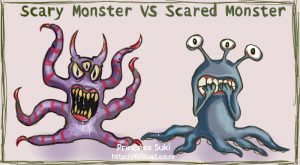 When you watch a video in English (TV show, movie, YouTube, etc), you can often choose to display the English words at the bottom of your screen – as they are being spoken. This is called closed captioning. Many times you will see “CC” to show where you need to turn it on.
When you watch a video in English (TV show, movie, YouTube, etc), you can often choose to display the English words at the bottom of your screen – as they are being spoken. This is called closed captioning. Many times you will see “CC” to show where you need to turn it on.
This is different from subtitles which are also used to show the spoken words, but in your own native language. When you are beginning to learn English, using subtitles in your native language can be helpful. It lets you listen to the spoken English pronunciation while you read the translation. This can be especially good for learning English slang and idiom expressions.
But as your English improves, closed captioning – reading the English words while you listen to those words being spoken – can help you more, in many ways including:
- Better understanding and remembering of what you read (reading comprehension)
- Better understanding and remembering of what you hear (listening comprehension)
- Improved vocabulary
Many times, you can stop the video, to listen to something again – a great way to practice.
For example, one new TV show, called Planet Earth, is on the cable station BBC America. They talk slowly and clearly so you really have time to listen and read the closed captions.
A website with many, short, interesting videos is TED.com. For many of the videos, you can display the words in either your own language, or English. Here’s one of their most popular videos. It’s on body language, and how just changing the way you stand can give you more confidence…




 When you watch a video in English (TV show, movie, YouTube, etc), you can often choose to display the English words at the bottom of your screen – as they are being spoken. This is called
When you watch a video in English (TV show, movie, YouTube, etc), you can often choose to display the English words at the bottom of your screen – as they are being spoken. This is called 
 A
A 

